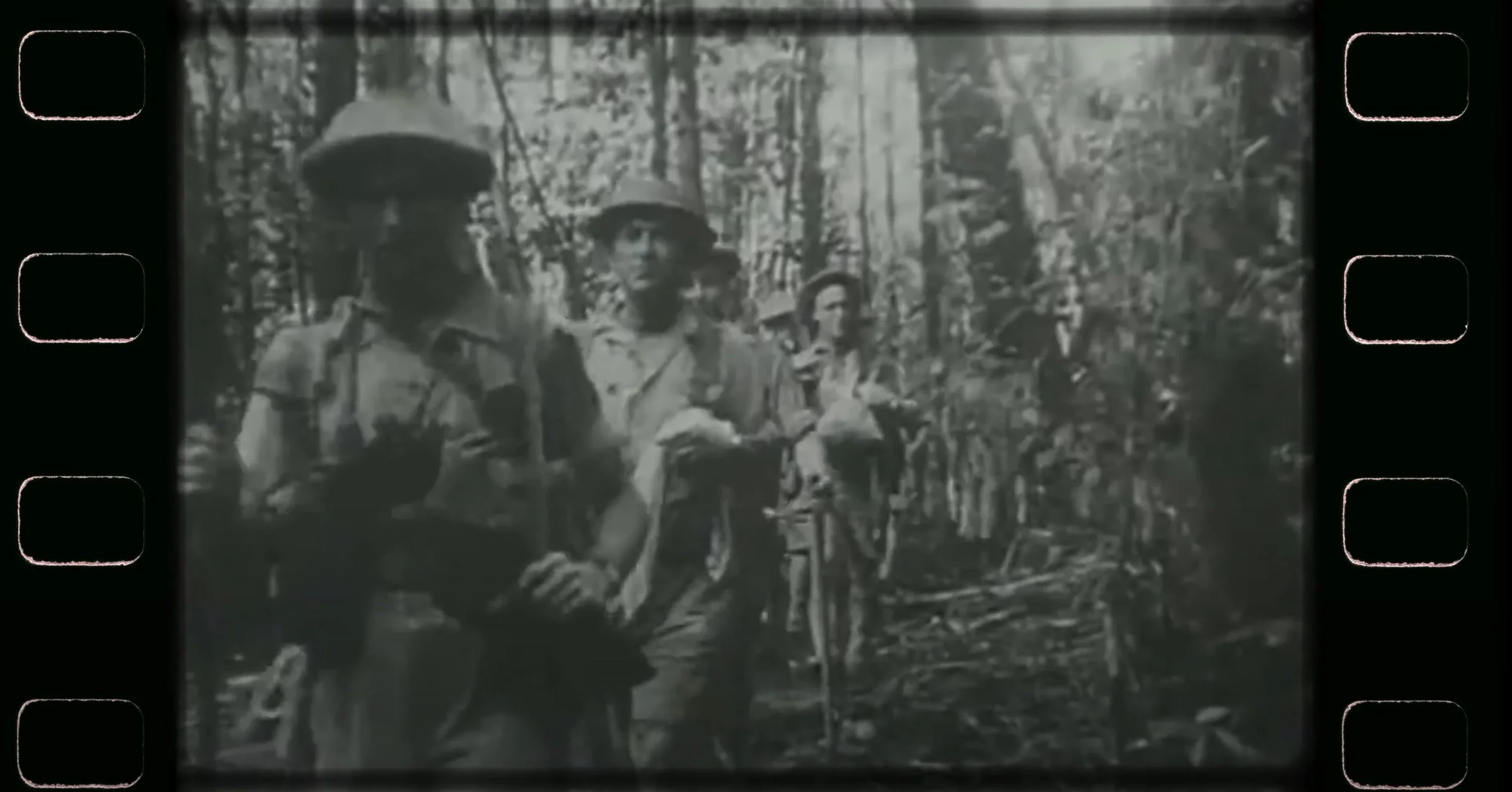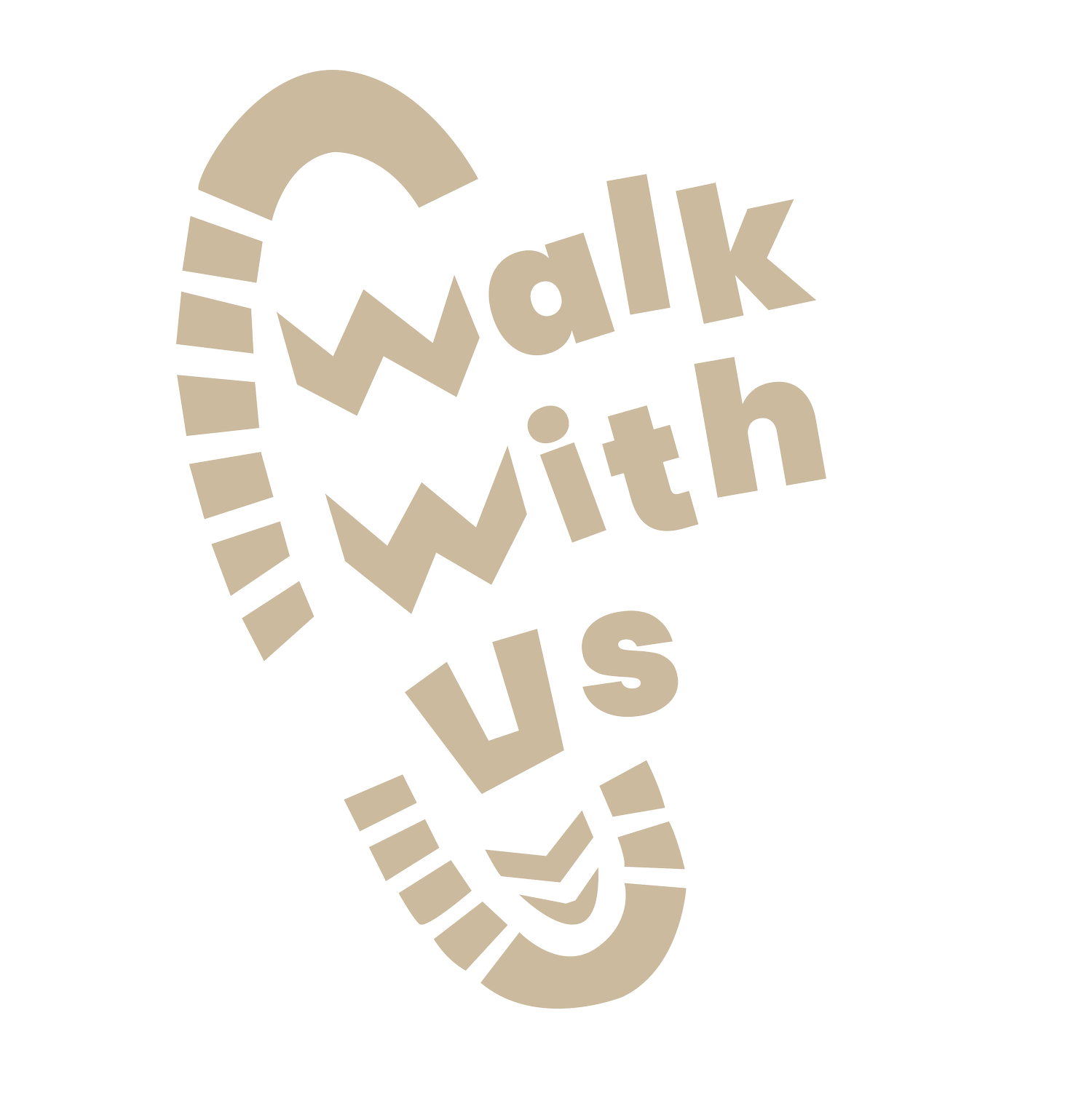
Walk with veterans, for veterans.

Ready to go and happy to pay your own way?
Learn more about the application process for sponsorship:
The Kokoda Track is more than a trek—it’s a test of grit, endurance, and resilience.
Covering 96 kilometres of rugged jungle and unforgiving terrain, it mirrors the conditions faced by the soldiers who fought to protect Australia.
This is where you’ll confront your own limits, walking in the footsteps of the heroes who shaped our nation's history.
For veterans, this experience is not just about physical challenge; it’s a chance to reflect on your own service, draw strength from shared history, and reignite that sense of purpose forged in the crucible of mateship.
Every step serves as a reminder of the sacrifices made and the values that define you—courage, endurance, and camaraderie.
When you join us on this journey, you're not only challenging yourself; you're helping to support your fellow veterans.
All profits go directly to initiatives that uplift and empower those who’ve served. This is more than a trek—this is your opportunity to connect with your past, honour your brothers and sisters in arms, and make a difference.

The path to discovery
For veterans, the Kokoda Track isn't just another physical challenge—it’s a profound journey that digs deep into the values you hold dear: mateship, sacrifice, courage, and endurance. You already know the weight of these words, but here, you’ll feel them anew, echoing through the ridges and rivers of this historic battlefield.
Walking in the footsteps of those who fought for each other and for Australia sharpens your understanding of service, resilience, and accountability. Each step on the track will bring reminders of the strength it took to keep going, no matter how impossible the task seemed—just like the soldiers did in WWII, and just like you have throughout your service.
More than just history, it’s a chance to reflect on your own path and your own battles. How will you use what you’ve learned to keep pushing forward? How will you lead, guide, and support those around you, just as you did in uniform? How will you embrace the lessons of mateship, courage, and sacrifice—both on the track and when you return home?
This journey is about finding those answers. Facing the trail with fellow veterans at your side will remind you of the power of shared experience and community.

THE JOURNEY
-
Welcome to the jungle
Your adventure begins at Jackson’s International Airport in Port Moresby. After meeting your fellow trekkers and our team of guides, you’ll transfer to the Holiday Inn, where you can relax and prepare mentally for the journey ahead. The evening’s trek briefing will cover safety, equipment, and expectations, setting the stage for the next ten days on the Kokoda Track. A Raising the Bar Staff member will give you a run down of the organisation and go through the experience from a veteran's perspective.
Trekker insight: “the brief is a great opportunity to meet your fellow trekkers and hear about their motivations for coming on the epic journey! It's a great opportunity to fast track your connections with each trekker, so it’s important to be as open as possible - vulnerability isn't a weakness, it allows you to share a bit of your story and why you are there!”
-
Heroes walked here – now it’s your turn
Your day begins with breakfast and a final call home before heading to Bomana War Cemetery, where over 3,800 Australian soldiers are buried. As you walk through the graves, you'll reflect on the courage of men like Private Bruce Kingsbury, who posthumously earned the Victoria Cross for his heroic stand at Isurava. (RSL Australia)
At Owers Corner, the trek begins. Walking in the footsteps of Australian soldiers, you’ll cross the Goldie River and reach Goodwater Camp by the end of the day, reflecting on the camaraderie and strength of those who fought here.
Trekker insight: “I found myself pretty anxious and not appreciating Bomana War Cemetery - did I pack everything I needed? Will I make it?…I wish I appreciated that moment, [and] put my anxieties aside for the 3800 soldiers buried there. Those anxieties are just that, and if I had forgotten something one of the other trekkers would have it anyway.”
Trekker insight: “From Owers corner, you are smacked in the face with a sharp descent. I had a bucketload of lactic acid build up in my legs. Make sure you enjoy a swim in Goldie River at the bottom, take a moment to ground yourself and enjoy where you are.”
-
The only way out is through
The climb up Imita Ridge is your first major test. Known as Australia's last line of defense, it's where soldiers knew they could retreat no further. This was a place of unimaginable hardship and sacrifice, where men stood their ground despite overwhelming odds.
After a steep descent, you'll face the many crossings of Ua-Ule Creek, a gruelling series of fords that will push your endurance. You'll camp at Ioribaiwa Ridge, where the Japanese advance was finally stopped, closing the day with a deeper respect for the soldiers' struggles.
Trekker insight: “Help your porter pack up your tent in the morning. It was my first time camping and felt out of my depth. I felt that I had so much to do in the morning routine, but taking the time to help him showed him an equal level of respect which isn't lost on them.”
Trekker insight: “Imita Ridge is a significant area which the Aussies were told they would die on that ridge and not retreat any further, it’s hard to comprehend how that would have felt. It’s the first part of the track I felt we were walking in the footsteps of those who went before us.”
-
Step by step, battle by battle
Today’s trek begins with the descent from Ioribaiwa Ridge and an inspection of the Japanese trenches. As you cross Ofi Creek, you learn about the ambushes carried out by Australian forces to slow the Japanese advance.
The climb up the Maguli Range and the notorious "Jap Ladder" tests your physical limits. The long, steep ascent is a challenge, but the thought of the soldiers who fought through these same conditions keeps you moving forward. The day ends at Nauro Village, where you reflect on the sacrifices made in this gruelling environment.
Trekker insight: “I felt pretty drained after the anticipation of the first couple of days and some pretty poor nights sleep because of that anticipation. I also knew Brigade Hill was coming. If I had one tip, I would say I wish I used this day to get to know some other fellow trekkers rather than sticking with my friend who was feeling the same, sometimes anxiety breeds anxiety - find yourself another trekker who maybe more confident, spend a bit of time with them, get to know them - it will help with your confidence”
Trekker insight: “It’s the first long day, you will be sore, have chafe and might want to head to bed straight away. Nauro Village was one of [the] best places to swim at the end of the day. The water is cold, but get in, spend some time using the cold water to recover…It was also such a grounding experience. Life is so busy back home and when I was in the water, my mind was so quiet as weird as that sounds”
-
From the mud you’ll rise
The Wall, a steep, short but taxing climb, begins your day. As you pass through Menari Village, you’ll take part in a small ceremony honouring the 39th Battalion, the first Australian unit to cross the track. Sergeant John "Don" McKay of the 39th exemplified leadership here, supporting his men even as his platoon was reduced to just a few soldiers. His actions remind you of the importance of perseverance (Kokoda Challenge).
The climb to Brigade Hill—one of the bloodiest battlefields on the track—provides a moment to reflect on the endurance and mateship of those who fought here. Despite being vastly outnumbered, the Australians managed to hold their ground, and the view from the summit feels like a hard-won reward.
Trekker insight: “Use Brigade hill as an opportunity to walk by yourself - push yourself as hard as possible. It’s just as much mental as it is physical and I used this hill to prove to myself I am capable of much more. That day was one of my proudest I had ever been in myself”
Trekker insight: “The service at the top of Brigade Hill will be etched in my memory as one of the most special times in my life. I never felt more proud of being an Australian - I think I started to realise the significance of the words Mateship, Courage, Endurance and Sacrifice after it!”
-
In the footsteps of angels
At dawn, you participate in a service at Brigade Hill, paying respects to the soldiers who gave their lives here. As you trek towards Efogi Village, you’ll meet the families of the Fuzzy Wuzzy Angels, whose invaluable support helped save countless lives during the campaign. Their dedication exemplifies true mateship.
Arriving at Naduri Village, where Ovuru Indiki, one of the last surviving Fuzzy Wuzzy Angels, once lived, brings home the critical role these locals played. The day’s trek may be shorter, but it’s filled with opportunities to reflect on how the Kokoda campaign depended on not just military efforts but also the support of the local community.
Trekker insight: “Efogi Village is beautiful, before you get into the village, chat to your porter and ask him if he could show you around his family home. Don’t feel like you are being intrusive, he will be proud to take you on a tour. If you have any gifts like books and pencils, give them to him and his family here.”
Trekker insight: “You are in Efogi for a while, it’s a good opportunity to take your shoes off, dry and treat your feet. Also get some fresh fruit from the market.”
Trekker insight: “It was hard to get going after lunch at Efogi, what made matters worse is the climb immediately up to Efogi 2 - There isn't much you can do about it - one step in front of the other!”
-
Where mateship conquers mountains
The climb to the highest point of the Kokoda Track provides stunning views of the Yodda Valley. As you walk through the Beech Forest, you imagine the soldiers making this same climb, knowing that they were about to engage in fierce combat.
The day’s walk ends at Templeton’s Crossing, named after Captain Sam Templeton, the first Australian officer to engage the Japanese on the track. His leadership and sacrifice resonate as you camp near the crossing, reflecting on the strategic importance of this site and the role it played in delaying the enemy advance (Kokoda Challenge).
Trekker insight: “The campsite at Templeton’s crossing is amazing - it was my best night's sleep because of how noisy the river is. The water is also so cold! Make sure you have a swim at the end of the day - you won’t regret it.”
Trekker insight: “You are well and truly past the halfway mark. I felt this part of the trip started to go so fast. I was more comfortable with the experience and routine..It’s a great opportunity to start thinking about how this challenge can be the catalyst for change back home, focus on giving some thought to what goals you may want to set for yourself when you are home and shape how you may achieve them over the next few days.”
-
Feel the weight of those who carried it all
The trek through Eora Creek leads to one of the most significant battle sites on the Kokoda Track. This area saw heavy fighting, with Australians delaying the Japanese forces for days. As you walk, you can still find remnants of artillery and ammunition left behind from these intense battles (Warrandyte Diary).
Arriving at Isurava Battlefield, where 76 Australian soldiers lost their lives, you’ll understand why this is known as the “battle that saved Australia.” The heroism of Bruce Kingsbury and the efforts of soldiers like John Metson, who despite being wounded, continued to lead his men, reflecting the endurance and selflessness required to survive (RSL Australia) (Warrandyte Diary).
Trekker insight: “I went on this experience for a personal challenge and today I felt this motivation was in some respects selfish. On reflection, the men who fought on this track were being the exact opposite - selfless. I learnt that whilst, it’s great to challenge yourself, it’s equally important to act selflessly in how you live your life an amazing amount can be achieved if this was every Australian's approach.”
Trekker insight: “Isarava was conflicting for me, In a sense there was a celebratory feeling in the group, but you are literally camping on a battlefield where so many people lost their lives. I took a moment to sit down at the memorial by myself and look at the pillars and reflect on this and the significance of the words inscribed on them.”
-
This ground is hallowed for a reason
The pre-dawn memorial service at Isurava is a humbling experience, offering time to reflect on the four pillars inscribed here: courage, endurance, mateship, and sacrifice. This battlefield, where Bruce Kingsbury earned his Victoria Cross, is a site that encapsulates the full weight of the Kokoda campaign (Warrandyte Diary).
As you descend to Deniki, you catch your first glimpse of Kokoda Village, knowing that the end is in sight. The day ends at Kovello Village, where you can reflect on the emotional and physical journey you’ve undertaken.
Treker insight: “Deniki is beautiful. It's also a place where you can get phone reception for the first time. I made the mistake of turning my phone on - try not to if you can.”
Trekker insight: “Between Deniki and Kovello reflect on your trek highs and lows and your goals and ambitions when you get home. That night I made a commitment to the group. You get patchy phone reception so I sent it to my wife along with all the other messages i wrote but did not send each night”
-
Beyond pain there is pride
The final stretch into Kokoda Village is a flat, easy walk compared to the challenges of the past days, but it carries emotional weight. You cross the finish line, welcomed by your team and the local villagers. As you tour the Kokoda Plateau and visit the war museum, you’ll better understand the strategic importance of this village during the campaign (Wikipedia).
A flight back to Port Moresby offers time to reflect on the journey, and a final stop at Bomana War
Cemetery closes the loop, allowing you to honour those whose names now carry deeper meaning.
Trekker insight: “Give your porter a little bit of cash - I gave mine $100 Kina and my boots.”
Trekker insight: “When you get back to the hotel, take some time to yourself in your room, have a shower, wash your gear and call your loved ones BUT make sure you celebrate with the trekkers you just completed this experience with. You might not see them again!”
-
The end is only the beginning
After breakfast, you’ll be transported to Jackson’s International Airport. The physical challenges may be over, but the lessons of courage, mateship, and endurance you’ve learned on the trail will stay with you long after you leave Papua New Guinea.
Trekker insight: “Get lounge access if you can! And if you can book an early flight!”

What’s included
Preparation & Pre-trek
Two pre-trek information sessions
Potential for sponsorship
Assistance fundraising
Administration & logistics
A 75L backpack provided by WWA
Charter flight between Port Moresby and Kokoda
$20 million in public liability coverage
Satellite communication links for emergency situations
Participation of an RTB staff member alongside the WWA guide
A fully trained guide with operational military service from the Australian Army, certified in First Aid and CPR
General porters to carry food and safety equipment
Experience & accommodation
The full Kokoda trek, as facilitated by WWA
Single Share - Two nights’ accommodation at the Holiday Inn, Port Moresby
Kokoda Trek Permit
Personal porter
Ground transportation throughout the experience
All meals during the trek, including breakfast, morning tea, lunch, afternoon tea, and dinner
Entry to all memorials and monuments, including Bomana War Cemetery
WHAT’S NOT INCLUDED
We’ve designed these packages to include everything you need for an exceptional experience. That said, we have found that there are often a few items best arranged to suit your individual preferences.
-
Food and beverages at the Hotel
Individual snacks purchased along the track at various village markets
Souvenirs purchased at various village markets
International flights
Travel insurance
Provision of personal medical stores
Gearing up for the journey
These essentials will help you navigate the Kokoda Track's unforgiving conditions, ensuring you're prepared for the adventure of a lifetime.
-
Clothing
Hiking boots, waterproof, and supportive
Hiking socks, wool or synthetic, bring several pairs
Hiking shirts, lightweight and quick-drying
Hiking pants or shorts, quick-drying
Fleece jacket
Waterproof jacket
Wide-brimmed hat
Swimwear
Lightweight gloves
Sunglasses
Gear
Hiking poles
Water bottles or hydration bladder
Headlamp
Personal first aid kit
Toiletries
Toothbrush & toothpaste
Sunscreen, high SPF
Insect repellant
Towel
Documents
Passport & Visa
Small amount of local currency

Words from those who have walked before you
GET STARTED NOW!
Ready to go? We are now taking bookings for the following dates:
2025
August 6th - 16th
2026
Anzac Day
April 15th - 25th
Remembrance Day
November 8th - 18th
2027
Anzac Day
April 17th - 28th
Remembrance Day
November 6th - 16th
Enter your details to download the info pack and we’ll be in touch soon.














